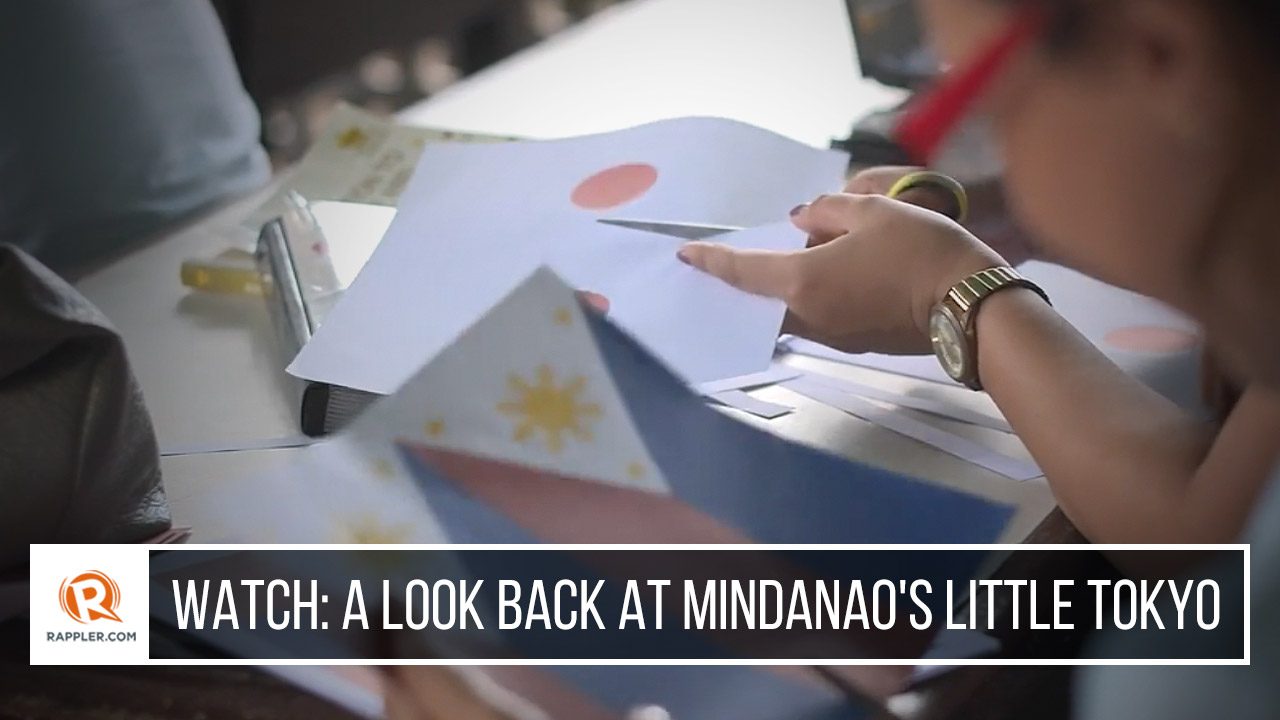SUMMARY
This is AI generated summarization, which may have errors. For context, always refer to the full article.

Japanese Prime Minister Shinzo Abe’s visit to Davao City was a much-anticipated event, especially for the city’s large community of Japanese descendants and Japanese expats.
Monuments and buildings built by the Japanese still stand to this day in Davao City.
At one point in history, Davao had the highest concentration of Japanese in the entire country.
Pia Ranada reports. – Rappler.com
When Japanese Prime Minister Shinzo Abe first set foot in Davao City on January 12, 2017, he brought a rich history of Philippine-Japanese ties to full circle.
If there’s one city in the Philippines where friendship between Filipinos and Japanese survived the test of time, it’s Davao City.
Here, it’s common to meet Davaoeños with Japanese ancestry.
Monuments and buildings built by the Japanese still stand to this day.
At one point in history, Davao had the highest concentration of Japanese in the entire country.
When did their story start?
VERON NAZARIO, HEAD, PHILIPPINE-JAPANESE MUSEUM: It began early 1900. The first Japanese who came here were recruited by a Spanish trader named Antonio Matute then they were given to Americans and Filipino plantation owners. Then in 1904, Mr Ohta Kyosaburo came with then temporary Governor Carpenter to scout for business opportunities.Then they saw the possibility of planting abaca here in Davao City instead of in Samar, Leyte, and Bicol which were on the typhoon path. So Ohta went back to Manila, sold all his properties, went around Manila gathering jobless Japanese whom he brought to Davao to work in his plantation.
Other waves of Davao City’s earliest Japanese settlers came from Kagoshima, like the grandfather of Ines Mallari, president of an organization of Japanese descendants.
Her grandfather opened a bakeshop in Davao City.
INES MALLARI, PRESIDENT, FEDERATION OF JAPANESE DESCENDANTS IN THE PHILIPPINES: They worked as laborers or started business here. And then by word of mouth people from Japan heard about Davao so some of them would start to come here before the war and before the war started it was already recorded that there were 20,000 Japanese who resided here in Davao, had intermarriages with the natives, or brought their family here and started their life here in Davao City.
Most of the Japanese were concentrated in only 3 parts of Davao City – the Mintal, Calinan, and Toril districts.
Before the war, the Japanese living in Barangay Mintal far outnumbered its Filipino residents.
Mintal became known as Little Tokyo.
The Japanese settlers became major players in the growth of the local economy which led to Davao becoming a city in 1936.
INES MALLARI, PRESIDENT, FEDERATION OF JAPANESE DESCENDANTS IN THE PHILIPPINES: They built roads, airports, bridges, they also established schools, hospitals so they really made Davao City very progressive.
But that period of prosperity came to an abrupt end when World War II broke out.
Japanese soldiers flooded Davao City and committed atrocities against Filipinos.
Many of the Japanese settlers became interpreters for the Japanese army.
When war ended in 1945, it left behind blistering wounds.
VERON NAZARIO, HEAD, PHILIPPINE-JAPANESE MUSEUM: When war ended, the Japanese army left. When classes resumed, the children of the Japanese were bullied in school. They were called “traitor,” “family of traitors,” “child of a Japanese,” “child of bow-legged people.”
The trauma was so great that Japanese descendants shed their Japanese surnames in favor of Filipino ones.
Some left their communities altogether.
INES MALLARI, PRESIDENT, FEDERATION OF JAPANESE DESCENDANTS IN THE PHILIPPINES: Most of the Japanese descendants had to leave their places because of fear to be killed, being children of Japanese, so most of them went to the mountains to hide themselves or their identity. They threw all their belongings, even their properties were stolen from them so they started from scratch.
Many Japanese settlers opted to return to their homeland, bringing with them their children.
But a policy forced underage Japanese descendants to stay in the Philippines with their Filipino mothers.
Perhaps the best place to reflect on the long history of Japanese in Davao City is Mintal Cemetery, once a cemetery exclusively for the Japanese.
Under ancient acacia trees, monuments commemorating the early Japanese settlers stand as witnesses of history.
But the memory of Philippine-Japanese ties in Davao City has not been erased.
It’s kept alive by places like this international school run by Japanese descendants.
Here, students of all nationalities are taught Nihongo and Japanese culture.
INES MALLARI, PRESIDENT, FEDERATION OF JAPANESE DESCENDANTS IN THE PHILIPPINES: In 2002, the college Mindanao Kokusai Daigaku was also established. It’s because of the generosity of some of the Davao-born Japanese who came back here, they were born here in Davao and then during the peace period after the war when they were already allowed to come back, they would come here to offer prayers for the dead loved ones and then they helped our association of Japanese descendants.
In the 1990s, second- and third-generation descendants like Mallari were officially recognized as Japanese descendants by the Japanese government, though hundreds remain unrecognized due to lack of records.
Prime Minister Abe’s visit reminds Davaoeños of their shared history with the Japanese, giving depth to the gestures of friendship between him and President Rodrigo Duterte, Davao City’s longest serving mayor.
As for the future of Japanese-Philippine ties, it’s an enduring friendship that may have a profound political impact on the region.
Pia Ranada, Rappler, Davao City.
Add a comment
How does this make you feel?
There are no comments yet. Add your comment to start the conversation.